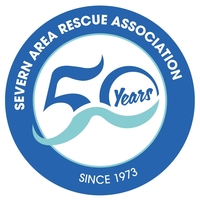Many thanks to
Gloucestershire County Council for capitally funding its installation. Please click
here for flooding information regarding this location. In order to effectively monitor water levels and road conditions in the area prone to flooding, a strategically positioned Farson webcam is employed at the location where the B4213 is affected. This webcam provides real-time surveillance, allowing for timely assessment and response to the changing conditions.. Haw Bridge is a modern structure that was constructed in 1961 to replace the previous bridge, which was demolished by an empty tanker barge traveling downstream. This bridge serves as a velocity-area measurement station positioned downstream of the Warwickshire Avon inflow, and it represents the lowest flow gauge on the River Severn.Gauging operations can be conducted from the bridge up until the point of bankfull, although access can be challenging during periods of exceptionally high flows when restrictions are imposed on bridge and road access. In such cases, gauging has been carried out along the B4213 road and within the channel itself.Tirley village is situated on a low limestone ridge just above the floodplain of the River Severn. It is positioned along the B4213 road, approximately half a mile west of Haw Bridge, which holds historical significance as a crossing point on the Severn dating back to the 13th century.Wightfield Manor has a long history, with records dating back to the reign of Edward the Confessor in the 11th century. By the year 1212, Apperley, a settlement in the vicinity, was part of Westminster Abbey's Deerhurst manor and held a valuation of three knight's fees. Westminster Abbey held Wightfield manor from at least 1284, and in the 14th century, it was acquired by Gilbert Despenser. The Beauchamp family's bear and ragged staff symbol can be seen as a gable finial on Apperley Hall, which dates back to the late 16th or early 17th century.In 1357, Gilbert Despenser sold Wightfield to John of Leigh, and in 1382, it changed hands once again to John Cassey. The Cassey family maintained ownership of the manor until the 17th century, but their property was sequestered by the Commonwealth of England due to their recusant and royalist affiliations between 1647 and 1654. Between 1660 and 1676, John Cassey sold Wightfield to Peter Fermor of Tusmore, Oxfordshire, who was a prominent recusant. The manor eventually passed to the Powell and Barnard families through Snell's descendants, until it was sold in 1881.Wightfield Manor house, situated half a mile east of Apperley, is a Tudor building with its earliest components dating back to the 16th century. The house incorporates stone, likely sourced from a chapel at the dissolved Benedictine Deerhurst Priory in 1547. It is partially surrounded by a moat, and there is an additional moated enclosure located just east of the house. Remnants of Anglo-Saxon walls and 12th-century masonry, including a Norman arch, have been discovered in the vicinity. The Cassey family had a house at this site as early as 1385.






